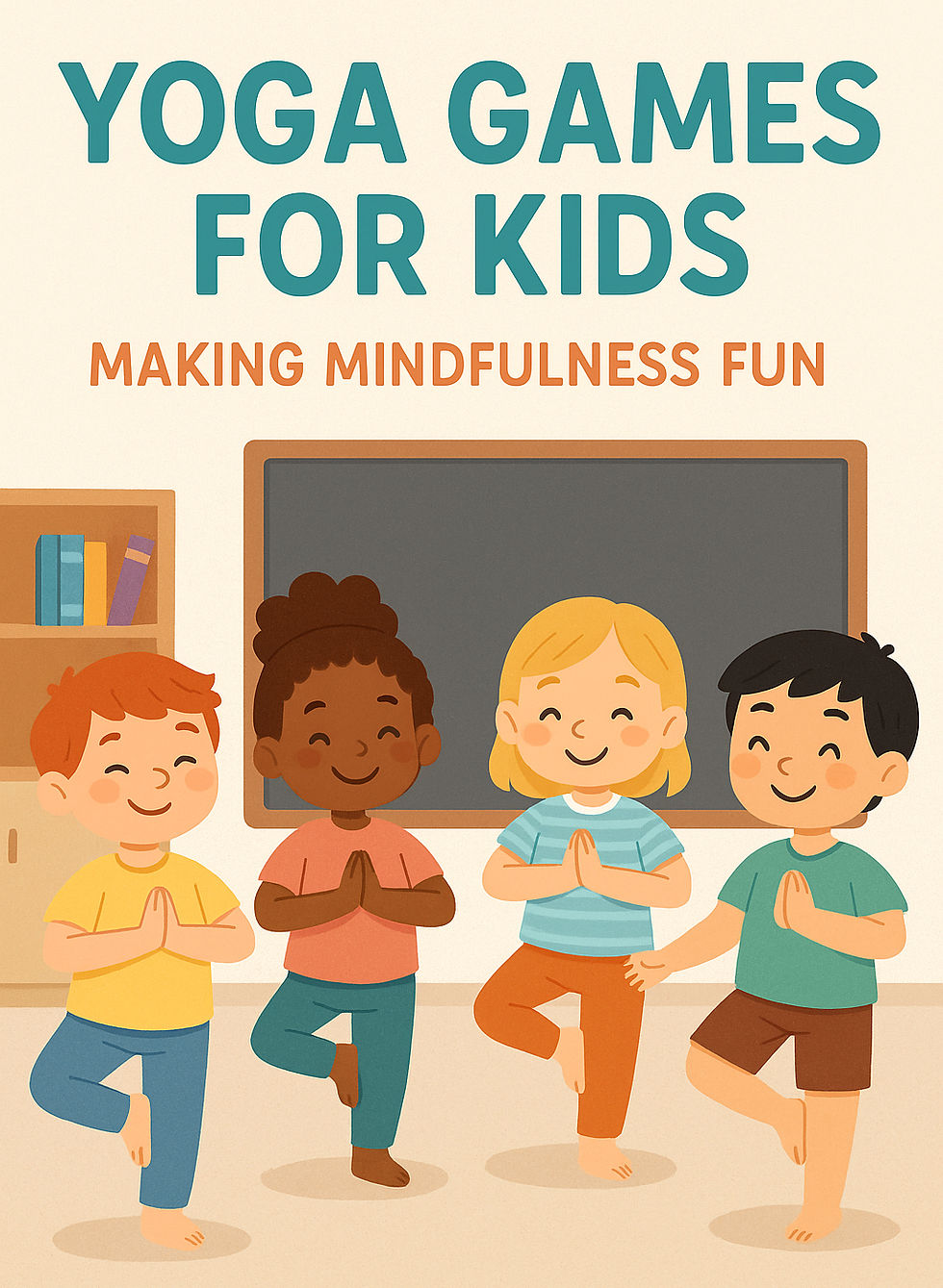Why Yoga is Great for Kids: Physical, Mental, and Emotional Benefits
- Jordan Concannon
- Feb 17
- 3 min read
Quick Look:
Introduction
Physical Benefits of Yoga for Kids
Mental Benefits of Yoga for Kids
Emotional Benefits of Yoga for Kids
Social Benefits of Yoga for Kids
Incorporating Yoga into Kids' Daily Routine
Conclusion
References and Additional Resources
Yoga, an ancient practice with roots in India, has gained immense popularity worldwide, not just among adults but also for children. As more parents, educators, and health professionals recognize the benefits of yoga, its integration into children's daily routines is growing. But why exactly is yoga great for kids? From enhancing physical strength to boosting mental well-being and emotional stability, yoga offers a holistic approach to child development. We explore the myriad benefits of yoga for children, providing insights into how this ancient practice supports their growth in today's fast-paced world.

Physical Benefits of Yoga for Kids
Improved Flexibility and Strength
Children are naturally flexible, but as they grow and engage in various activities, maintaining that flexibility becomes essential. Yoga poses, or asanas, help stretch muscles, improve joint mobility, and build strength. Poses like the Downward Dog, Tree Pose, and Warrior Pose target different muscle groups, enhancing overall flexibility and strength.
A study published in the International Journal of Yoga found that children who practiced yoga regularly showed significant improvements in flexibility and muscle strength (source: International Journal of Yoga). This physical development is crucial for active kids involved in sports and other physical activities.
Better Posture and Balance
Good posture is vital for children's physical health, especially with the increasing use of digital devices. Yoga helps in correcting posture by strengthening core muscles and promoting spinal alignment. Balancing poses like the Eagle Pose and Half-Moon Pose improve balance and stability, which are essential for coordination and motor skills.
Enhanced Coordination
Yoga encourages body awareness and coordination. As kids learn to move from one pose to another, they develop better motor control and spatial awareness. This enhanced coordination can benefit them in everyday activities and sports.
Promotes Healthy Growth and Development
The stretching and strengthening aspects of yoga contribute to overall physical development. Regular practice supports bone health, muscle growth, and cardiovascular health, laying a strong foundation for a healthy future.
Mental Benefits of Yoga for Kids
Enhances Focus and Concentration
In a world filled with distractions, maintaining focus can be challenging for children. Yoga practices like mindful breathing and meditation enhance attention span and concentration. According to a study by Harvard Medical School, children who practiced yoga regularly showed improved attention and academic performance (source: Harvard Medical School).
Reduces Stress and Anxiety
Yoga provides children with tools to manage stress and anxiety. Breathing exercises (pranayama) and relaxation techniques (savasana) help calm the mind. Studies have shown that yoga reduces cortisol levels (the stress hormone), promoting a sense of calm and well-being (source: National Center for Complementary and Integrative Health).
Boosts Cognitive Function
Yoga stimulates brain function through mindful movements and breath control. It enhances memory, problem-solving skills, and cognitive flexibility, essential for academic and personal growth.
Emotional Benefits of Yoga for Kids
Builds Self-Confidence and Self-Esteem
Mastering yoga poses gives children a sense of accomplishment, boosting their confidence. Positive affirmations during yoga sessions reinforce self-worth and resilience.
Encourages Emotional Regulation
Yoga teaches children to recognize and manage their emotions. Techniques like deep breathing help them stay calm during stressful situations, enhancing emotional resilience.
Fosters a Sense of Calm and Relaxation
The relaxation techniques in yoga provide children with a sense of inner peace. This calmness helps them navigate daily challenges with a balanced mind.
Social Benefits of Yoga for Kids
Promotes Teamwork and Social Skills
Group yoga classes encourage teamwork and communication. Partner poses and group activities build trust and collaboration among children.
Encourages Compassion and Empathy
Yoga philosophy promotes kindness and empathy. Children learn to respect themselves and others, fostering positive relationships.
Incorporating Yoga into Kids' Daily Routine
Simple Ways to Start
Begin with short sessions (10-15 minutes) focusing on basic poses.
Include fun elements like stories or animal-themed poses.
Use yoga cards or videos designed for kids.
Tips for Parents and Educators
Create a dedicated space for yoga practice.
Encourage consistency without making it a chore.
Join your kids in practice to make it a bonding activity.
Yoga offers a holistic approach to child development, enhancing physical, mental, emotional, and social well-being. Incorporating yoga into children's routines can lead to healthier, happier, and more balanced lives. As parents, educators, and guardians, embracing yoga for kids is an investment in their overall growth and well-being.
At Root and Roar Yoga, we believe in nurturing young minds and bodies through mindful movement and joyful practice. Join us on this journey to help children roar with confidence and root themselves in mindfulness.




Comments